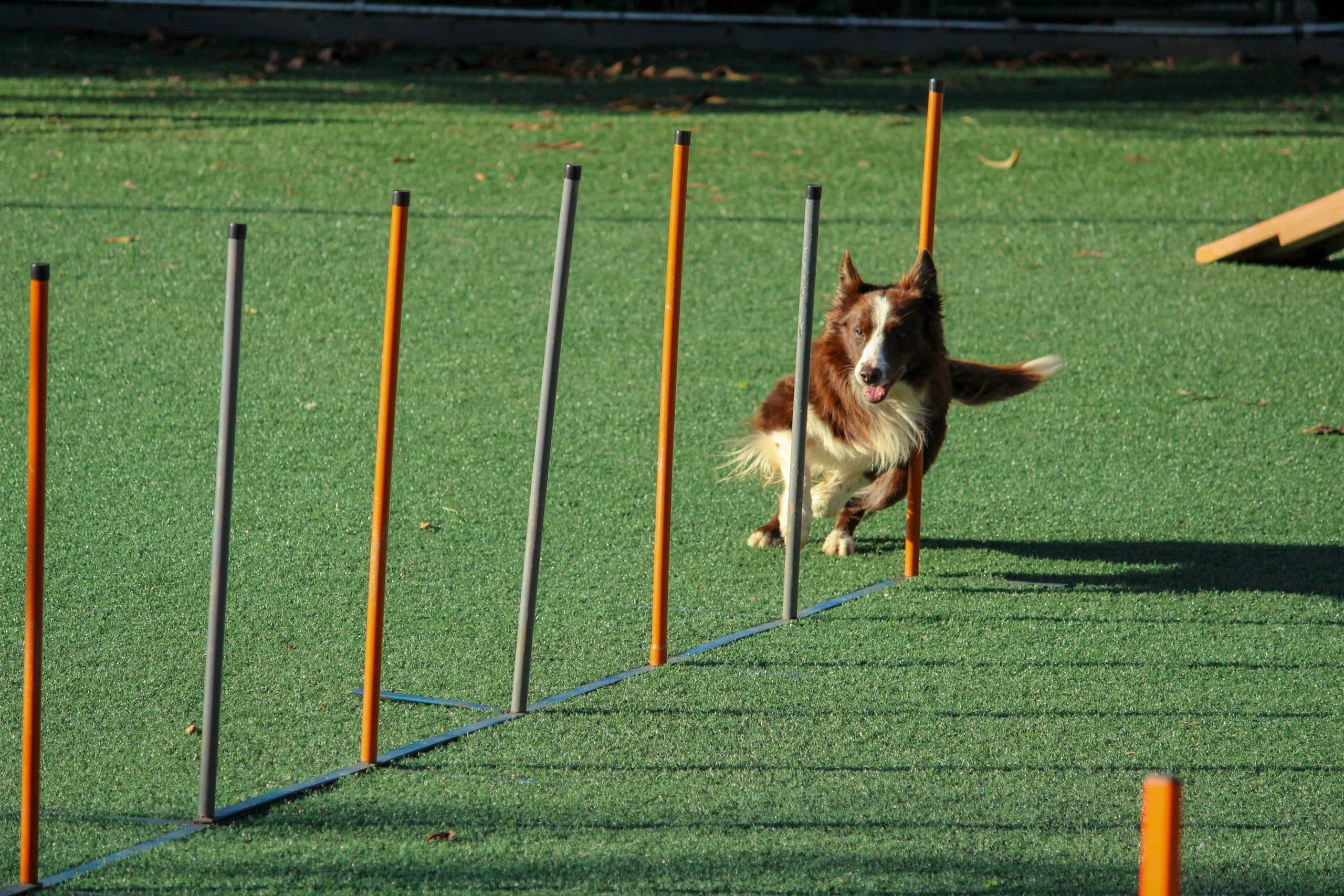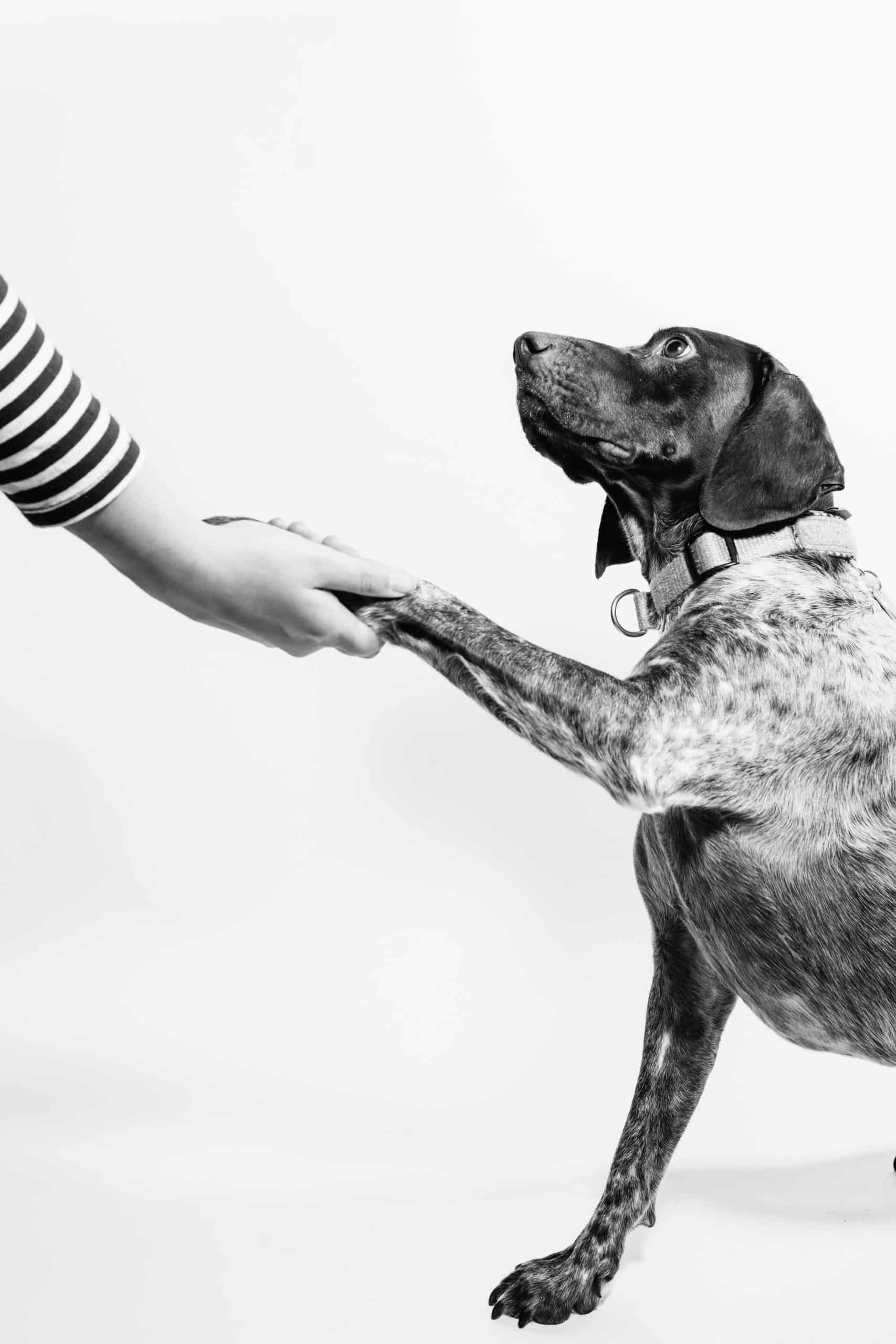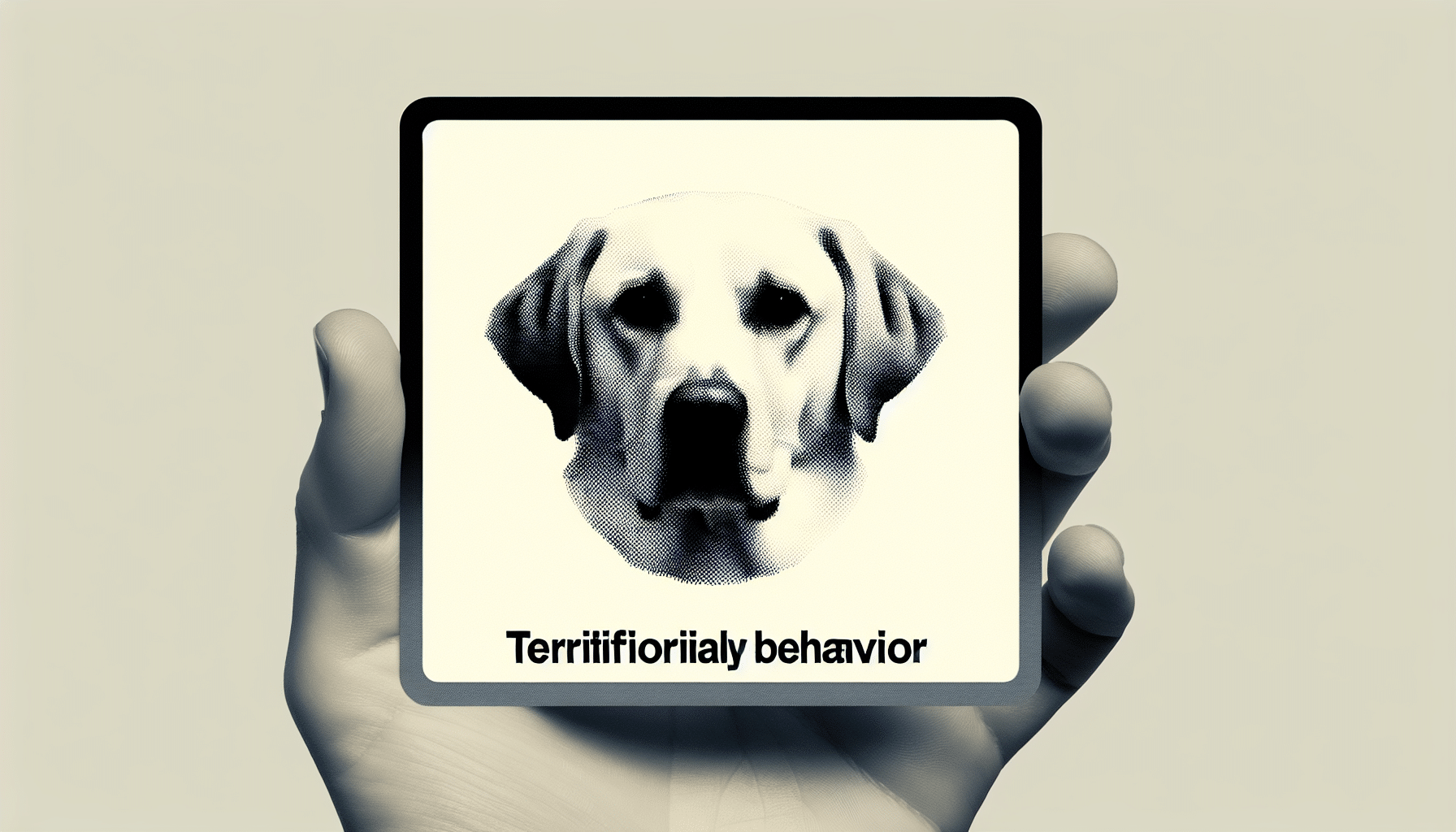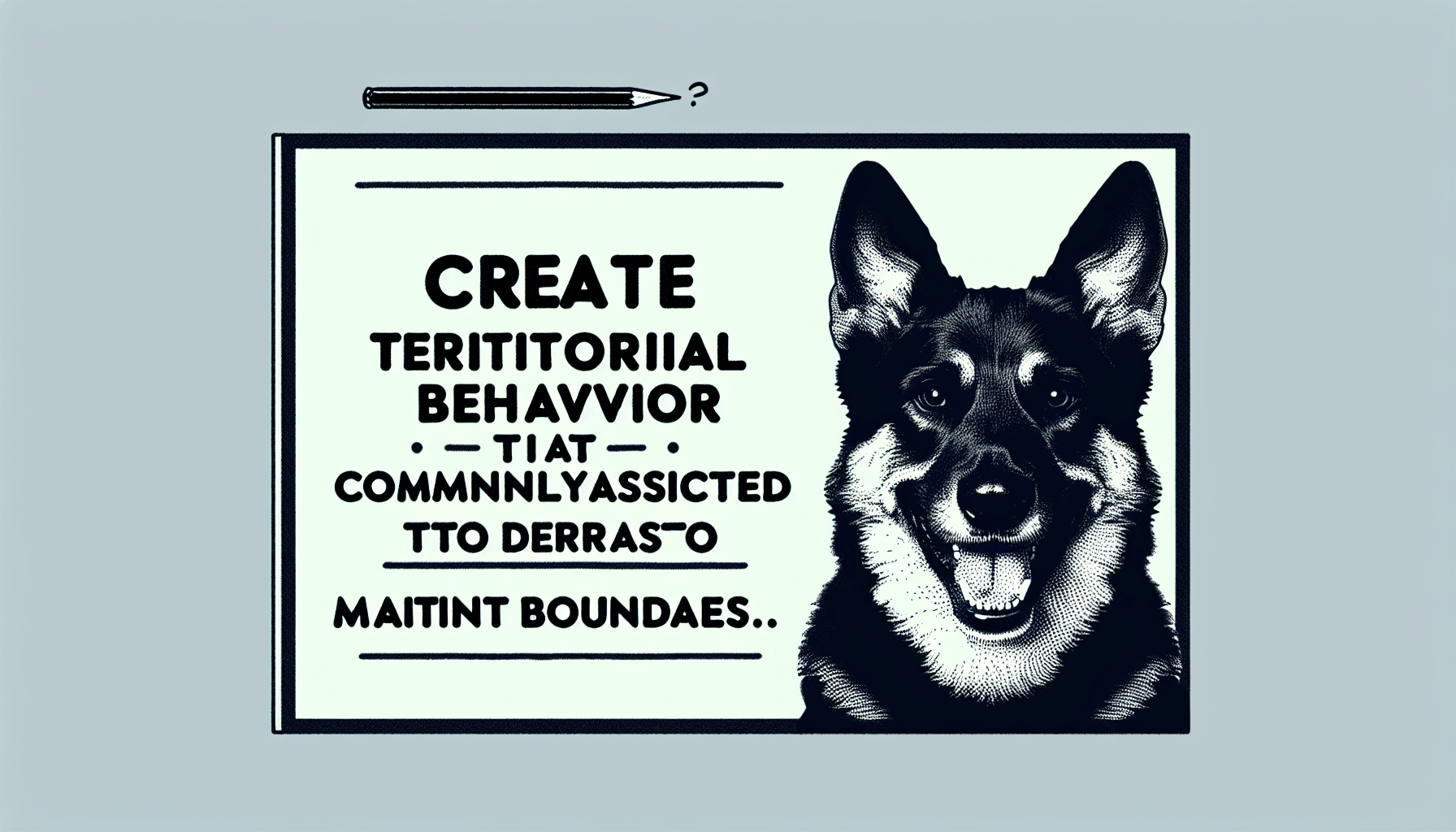If you have a furry friend who tends to get a little too possessive over their home or personal space, you may be familiar with the challenges that come with managing territorial behavior in dogs. But fear not, because in this article, we will explore some effective strategies to help you and your canine companion navigate this behavior with ease. From understanding the underlying causes to implementing positive reinforcement techniques, we have got you covered when it comes to fostering a more harmonious and balanced environment for both you and your dog.

This image is property of images.unsplash.com.
Understanding Territorial Behavior in Dogs
Territorial behavior in dogs refers to the instinctive behavior exhibited by dogs to protect and defend their territory. The concept of territory for dogs can extend beyond just the physical space they occupy. It can also include objects, people, and even other animals that they consider part of their domain. Understanding territorial behavior is crucial for dog owners to ensure the well-being and safety of both their pets and those around them.
Definition of Territorial Behavior
Territorial behavior in dogs can manifest in various ways. It often involves marking and scenting, aggressive displays, boundary guarding, and body language cues. These behaviors are rooted in the dog's natural instinct to defend and protect their space. By understanding the different types of territorial behavior, dog owners can better identify and manage these behaviors in their pets.
Causes of Territorial Behavior in Dogs
Several factors can contribute to the development of territorial behavior in dogs. Hormonal changes, underlying fear or anxiety, lack of socialization, and past experiences can all play a role in the development of territorial aggression. It is important to recognize and address the underlying causes to effectively manage and modify these behaviors.
Identifying Signs of Territorial Behavior
To effectively manage territorial behavior in dogs, it is crucial to be able to identify the signs and triggers. Some common signs of territorial behavior include marking and scenting, aggressive displays such as growling or barking, boundary guarding behavior, and various body language cues such as stiffening or raised hackles. By being aware of these signs, dog owners can address the behavior promptly and prevent any potential escalation.
Marking and Scenting
One of the primary ways dogs exhibit territorial behavior is through marking and scenting. Dogs use their urine to mark their territory, leaving behind a scent that communicates their presence to other animals. This behavior serves as a way for dogs to establish their boundaries and communicate with other dogs. It is important for dog owners to understand this behavior and provide appropriate outlets for marking, such as designated areas or walks, to prevent indoor accidents and minimize territorial marking.
Aggressive Displays
Aggressive displays are another common sign of territorial behavior in dogs. This can include growling, barking, lunging, or even biting in extreme cases. Aggression is the dog's way of defending its territory and maintaining control over its perceived space. It is crucial for dog owners to address aggressive displays promptly and seek professional help if necessary to ensure the safety of everyone involved.
Boundary Guarding
Boundary guarding is yet another aspect of territorial behavior in dogs. Dogs may exhibit this behavior by patrolling and defending the boundaries of their territory, such as their yard or home. They may become defensive or aggressive towards anyone or anything approaching these boundaries. It is important for dog owners to establish clear boundaries for their pets and manage boundary guarding behavior to prevent any unnecessary conflicts.
Body Language Cues
Understanding a dog's body language cues is essential for recognizing territorial behavior. Dogs may display various body language cues when they feel threatened or are trying to assert their dominance. These cues may include stiffening of the body, raised hackles, ears pulled back or forward, staring, or even raised tail. By being observant of these cues, dog owners can better understand their pets' emotional state and intervene appropriately.
This image is property of images.unsplash.com.
Early Socialization and Training
Early socialization and training play a vital role in preventing and managing territorial behavior in dogs. By exposing puppies to different environments, people, and animals, owners can help them develop positive associations and reduce fear or anxiety responses. Gradual and positive exposure to new stimuli can help dogs feel more comfortable and less likely to exhibit territorial behavior.
Importance of Early Socialization
Early socialization is crucial for dogs to learn appropriate behaviors and develop good social skills. Introducing puppies to new experiences, people, and animals during their critical socialization period (between 3 to 14 weeks of age) can help prevent the development of territorial behavior. Positive interactions during this period can help puppies build confidence and reduce fear or anxiety associated with novel stimuli.
Expose Dogs to Different Environments
To ensure a well-socialized and non-territorial dog, it is essential to expose them to different environments. This can include walks in various locations, visits to parks, and interaction with other dogs in controlled environments. By exposing dogs to different settings, owners can help them understand that the world is not threatening and reduce the likelihood of territorial behavior.
Positive Reinforcement Training
Positive reinforcement training techniques are highly effective in managing territorial behavior in dogs. Rewarding desired behaviors encourages dogs to repeat them, while ignoring or redirecting unwanted behaviors helps to discourage them. By focusing on positive reinforcement, owners can build a strong bond with their dogs and promote behaviors that are incompatible with territorial aggression.
Teaching Obedience Commands
Teaching obedience commands is a crucial part of managing territorial behavior. Commands such as "sit," "stay," or "leave it" can help redirect a dog's attention away from triggers and prevent potential conflicts. By consistently practicing these commands in various contexts, owners can reinforce their leadership role and provide clear expectations for their dogs.
Creating a Secure and Comfortable Environment
Creating a secure and comfortable environment is essential for managing territorial behavior in dogs. By establishing clear boundaries, implementing secure fencing, providing a designated "safe space," and eliminating triggers for territorial behavior, owners can help reduce stress and anxiety in their pets.
Establishing Clear Boundaries
Establishing clear boundaries is crucial for managing territorial behavior. Dogs need to understand where their territory ends and what areas are off-limits. Consistently reinforcing these boundaries through verbal cues, physical barriers, or training can help prevent territorial conflicts.
Implementing Secure Fencing
Secure fencing is an important aspect of creating a safe and secure environment for dogs. Dogs that display territorial behavior may become more anxious or reactive if they can see or hear potential intruders. A well-maintained and secure fence can help minimize these triggers and provide a physical barrier to keep the dog within its designated territory.

This image is property of images.unsplash.com.
Providing a Designated 'Safe Space'
Providing a designated "safe space" for dogs can help alleviate territorial behavior. This can be a specific room, crate, or bed where the dog feels secure and comfortable. By having a safe space, dogs have a refuge where they can retreat from potential threats or stressful situations. It is important not to force the dog into their safe space but rather allow them to choose it willingly.
Eliminating Triggers for Territorial Behavior
Identifying and eliminating triggers for territorial behavior is crucial for managing this behavior. This can include removing or blocking visual or auditory stimuli that provoke the dog's territorial response. By minimizing triggers, owners can create a calmer environment and reduce the likelihood of territorial aggression.
Proper Exercise and Mental Stimulation
Regular exercise and mental stimulation are essential for managing territorial behavior in dogs. By providing outlets for physical and mental energy, owners can help keep their dogs content and less likely to exhibit territorial behavior.
Regular Exercise and Walks
Regular exercise and walks are important for a dog's overall well-being and can help reduce territorial behavior. Dogs that receive sufficient physical activity are less likely to become restless or frustrated, which can contribute to territorial aggression. Daily walks allow dogs to explore and scent their environment, which fulfills their natural instincts.
Engaging in Interactive Play
Engaging in interactive play with dogs is another great way to manage territorial behavior. Interactive play helps release excess energy and provides mental stimulation, which can help reduce anxiety and boredom. Interactive toys such as tug ropes or fetch toys can be used to redirect the dog's energy and attention away from territorial triggers.
Use of Puzzle Toys and Food Dispensers
Puzzle toys and food dispensers are excellent tools to provide mental stimulation for dogs. These toys require dogs to problem-solve and work for their food, which can help keep their minds occupied and reduce territorial behavior. By providing mental challenges, owners can help prevent boredom and the associated negative behaviors.
Enrichment Activities
Enrichment activities, such as nose work or agility training, can be beneficial for managing territorial behavior. These activities tap into a dog's natural instincts and provide both mental and physical stimulation. Engaging in such activities helps dogs stay focused and less likely to display territorial behavior.
Managing and Modifying Behaviors
Managing and modifying territorial behaviors require patience and consistent training. By utilizing positive reinforcement techniques, redirecting attention and behavior, desensitization, and counter-conditioning, owners can effectively modify their dog's territorial behavior.

Positive Reinforcement Techniques
Positive reinforcement techniques are the cornerstone of behavior modification. Rewarding desired behaviors with praise, treats, or play can help reinforce those behaviors and discourage territorial aggression. By focusing on positive reinforcement, owners can build trust and strengthen the bond with their dogs.
Redirecting Attention and Behavior
Redirecting a dog's attention and behavior is an effective technique for managing territorial behavior. If a dog starts exhibiting territorial signs, distracting them with a toy, command, or alternative activity can help redirect their focus away from potential triggers. This technique helps prevent the escalation of territorial aggression.
Desensitization and Counter-Conditioning
Desensitization and counter-conditioning are techniques used to modify a dog's response to specific triggers. By gradually exposing the dog to the trigger at a low intensity while rewarding calm behaviors, the dog can learn to associate the trigger with positive experiences rather than aggression. This method helps the dog become more relaxed and less reactive in territorial situations.
Seeking Professional Help
In some cases, managing territorial behavior may require the assistance of a professional dog trainer or behaviorist. These professionals have the knowledge and expertise to develop personalized behavior modification programs to address the specific needs of the dog. In severe cases, medication options, rehabilitation, and specialized training may also be recommended.
Establishing Rules and Consistency
Establishing rules and remaining consistent is vital for managing territorial behavior in dogs. By setting clear expectations, providing consistent reinforcement, and avoiding conflicting messages, owners can help create a structured environment that promotes positive behaviors.
Setting Clear Expectations
Dogs thrive when they understand their role and what is expected of them. By setting clear expectations and boundaries, owners can help prevent confusion or anxiety that may contribute to territorial behavior. Consistently reinforcing these expectations through training and positive reinforcement ensures that the dog understands what is appropriate behavior.
Consistent Reinforcement
Consistency in reinforcement is key to managing territorial behavior. Owners should consistently reward desired behaviors and discourage unwanted behaviors across different situations. Inconsistency in reinforcement can lead to confusion and may inadvertently reinforce territorial aggression.
Avoiding Conflicting Messages
Avoiding conflicting messages is important when it comes to managing territorial behavior. Mixed signals can confuse dogs and undermine training efforts. Consistency in commands, expectations, and reinforcement helps eliminate any ambiguity and enables dogs to understand and follow the rules.

Involving All Family Members
Consistency in training and management requires the involvement of all family members. Everyone in the household should be on the same page regarding rules, boundaries, and reinforcement techniques. This ensures that the dog receives consistent messages and helps prevent any inconsistencies or confusion.
Utilizing Calming and Soothing Techniques
Calming and soothing techniques can help dogs relax and reduce their territorial behavior. By providing a calm and soothing environment, using tools such as pheromone diffusers, engaging in massage and relaxation exercises, and considering natural remedies and supplements, owners can help alleviate anxiety and promote overall well-being.
Provide a Calm and Soothing Environment
Creating a calm and soothing environment is essential for managing territorial behavior. Dogs are sensitive to their surroundings, and a chaotic or stressful environment can exacerbate their territorial aggression. By ensuring a peaceful atmosphere, owners can help their dogs feel safe and reduce anxiety.
Tools Such as Pheromone Diffusers
Pheromone diffusers are products that release synthetic pheromones to create a sense of security and calmness. These diffusers mimic the natural pheromones dogs produce and can help reduce anxiety and territorial behavior. Placing pheromone diffusers in areas where the dog spends most of their time can create a serene environment.
Massage and Relaxation Exercises
Massage and relaxation exercises are beneficial for calming anxious dogs and promoting relaxation. Gentle massages and stretching exercises can help release tension and reduce stress levels. By incorporating these activities into the daily routine, owners can create a sense of calmness and help their dogs cope with territorial triggers.
Natural Remedies and Supplements
Natural remedies and supplements can be used as adjuncts to managing territorial behavior in dogs. Products such as herbal remedies, calming pheromone sprays, or nutritional supplements containing ingredients like chamomile or lavender have shown potential in reducing anxiety and promoting relaxation. However, it is important to consult with a veterinarian before introducing any such remedies to ensure they are safe and appropriate for the dog's individual needs.
Addressing Specific Triggers
Addressing specific triggers is crucial for managing territorial behavior. By identifying the specific situations or stimuli that provoke the dog's territorial response, owners can implement strategies to gradually desensitize and counter-condition their dog's reaction.
Identifying Specific Triggers
Observation and record-keeping are essential for identifying specific triggers for territorial behavior. By noting the circumstances, people, or objects that consistently elicit a territorial response, owners can begin to address these triggers more effectively. Identifying specific triggers helps develop targeted behavior modification plans.
Gradual Exposure and Desensitization
Once the triggers are identified, gradually exposing the dog to those triggers in controlled and manageable ways can help desensitize them. Starting at a low-intensity level and rewarding calm behavior can help the dog overcome their anxiety or fear response and learn to tolerate or even accept the trigger without aggression.
Counter-Conditioning Techniques
Counter-conditioning techniques involve pairing the trigger with positive experiences to change the dog's emotional response. By associating the trigger with something pleasant, such as treats or playtime, owners can help the dog form positive associations and reduce their territorial aggression. Consistency and gradual progression are key to successful counter-conditioning.
Implementing Management Strategies
In addition to behavior modification techniques, implementing management strategies is crucial for minimizing the occurrence of territorial behavior. This can include modifying the environment, establishing routines, providing distractions, or utilizing tools such as baby gates or muzzle training to ensure everyone's safety.
Consulting a Professional Dog Trainer or Behaviorist
If territorial behavior persists or escalates despite the owner's best efforts, it is advisable to seek the guidance of a professional dog trainer or behaviorist. These experts can assess the behavior, develop a customized behavior modification plan, and provide the necessary support and guidance throughout the process.
Behavior Modification Programs
Behavior modification programs are designed to address specific undesirable behaviors, such as territorial aggression. These programs usually involve a combination of techniques, including conditioning, reinforcement, and desensitization, tailored to the dog's individual needs. A professional trainer or behaviorist can guide owners through these programs and monitor progress.
Medication Options
In severe cases, medication may be considered as part of the overall management strategy for territorial behavior. Medications such as anti-anxiety medications or selective serotonin reuptake inhibitors (SSRIs) may help reduce anxiety and aggression in dogs. Medication should always be prescribed and monitored by a veterinarian.
Rehabilitation and Specialized Training
For dogs with deeply ingrained territorial behavior, rehabilitation and specialized training programs may be necessary. These programs focus on addressing underlying anxieties, building confidence, and teaching alternative behaviors. They often involve intensive training and behavior modification techniques to help reshape the dog's response to territorial stimuli.
In conclusion, understanding territorial behavior in dogs is crucial for maintaining a harmonious and safe environment for both pets and their owners. By recognizing the signs, addressing the underlying causes, and implementing effective management and modification strategies, owners can help their dogs develop healthier behavior patterns and reduce territorial aggression. Whether through early socialization, proper training, or seeking professional help when needed, every owner can play a role in managing territorial behavior and ensuring the well-being of their beloved canine companions.



